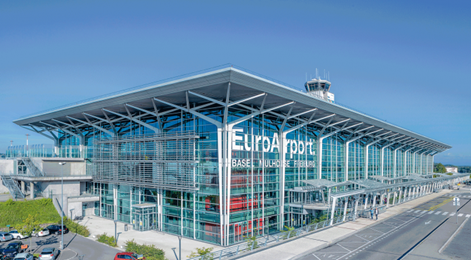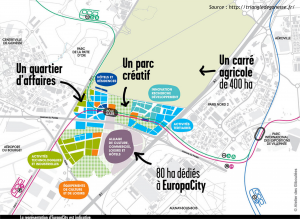 EXPLAIN has been chosen by SNCF Reseau to produce the strategic analysis for the new rail link project to the Euroairport.
EXPLAIN has been chosen by SNCF Reseau to produce the strategic analysis for the new rail link project to the Euroairport.
The project provides high level of service to the growing international airport located between Basel, Mulhouse and Freibourg.
Beyond the strategic study EXPLAIN’s role is to assemble all economic studies and prepare for the public enquiry.


 EXPLAIN is part of the teams selected by Greater Paris to invent an innovative urban project around the future Saint-Denis Pleyel Greater Paris Express station.
EXPLAIN is part of the teams selected by Greater Paris to invent an innovative urban project around the future Saint-Denis Pleyel Greater Paris Express station.
 Since 7 August 2015, the role of the regions has been reinforced and each region must produce a policy framework which fixes rules with regard to energy, climate change, biodiversity, waste management etc. and fret and passenger transport.
Since 7 August 2015, the role of the regions has been reinforced and each region must produce a policy framework which fixes rules with regard to energy, climate change, biodiversity, waste management etc. and fret and passenger transport. EXPLAIN has been chosen to produce traffic forecast and cost benefit analysis of various scenario designed to improve PT accessibility to the Bordeaux airport. Options include the extension of Tramway line A as well as the creation of new BRT services.
EXPLAIN has been chosen to produce traffic forecast and cost benefit analysis of various scenario designed to improve PT accessibility to the Bordeaux airport. Options include the extension of Tramway line A as well as the creation of new BRT services. The volume of passenger is expected to grow significantly in the Montparnasse station as a result of the opening of several new high speed lines: Tour-Bordeaux in 2017 and then Bordeaux-Toulouse and Bordeaux-Dax.
The volume of passenger is expected to grow significantly in the Montparnasse station as a result of the opening of several new high speed lines: Tour-Bordeaux in 2017 and then Bordeaux-Toulouse and Bordeaux-Dax.
 EXPLAIN has been chosen by STIF to define new BRT lines and their characteristics.
EXPLAIN has been chosen by STIF to define new BRT lines and their characteristics. Suburban train stations offering access to large metropolitan areas are subject to strong parking pressure with many commuters accessing by car. This situation can be a source of conflicts with those who live in the vicinity of stations and use valuable land which could be devoted to other urban projects.
Suburban train stations offering access to large metropolitan areas are subject to strong parking pressure with many commuters accessing by car. This situation can be a source of conflicts with those who live in the vicinity of stations and use valuable land which could be devoted to other urban projects. The “EuropaCity” project planned in triangle de Gonesse includes several new developments: business, shops, hotels, leisure and cultural facilities.
The “EuropaCity” project planned in triangle de Gonesse includes several new developments: business, shops, hotels, leisure and cultural facilities.